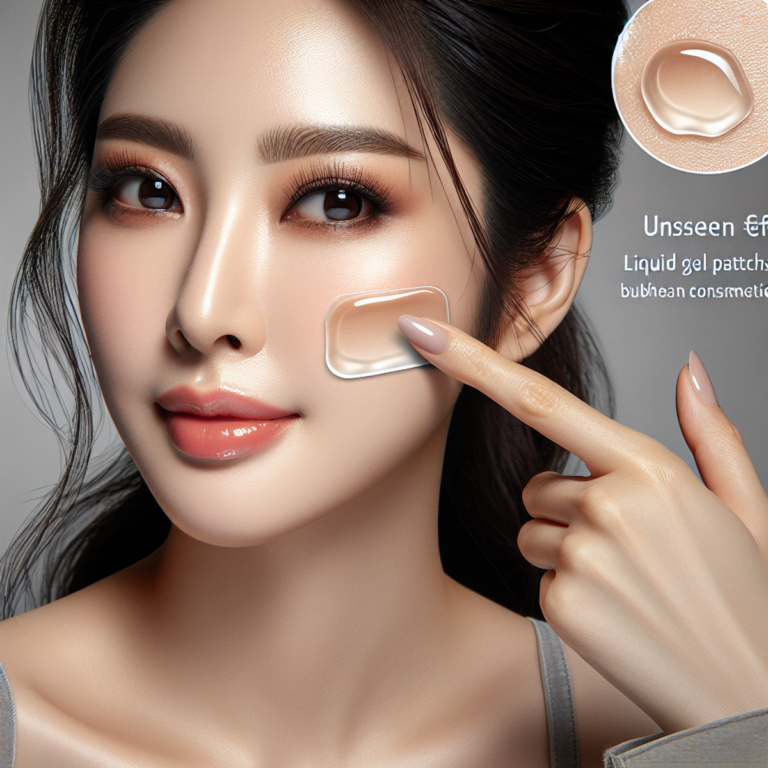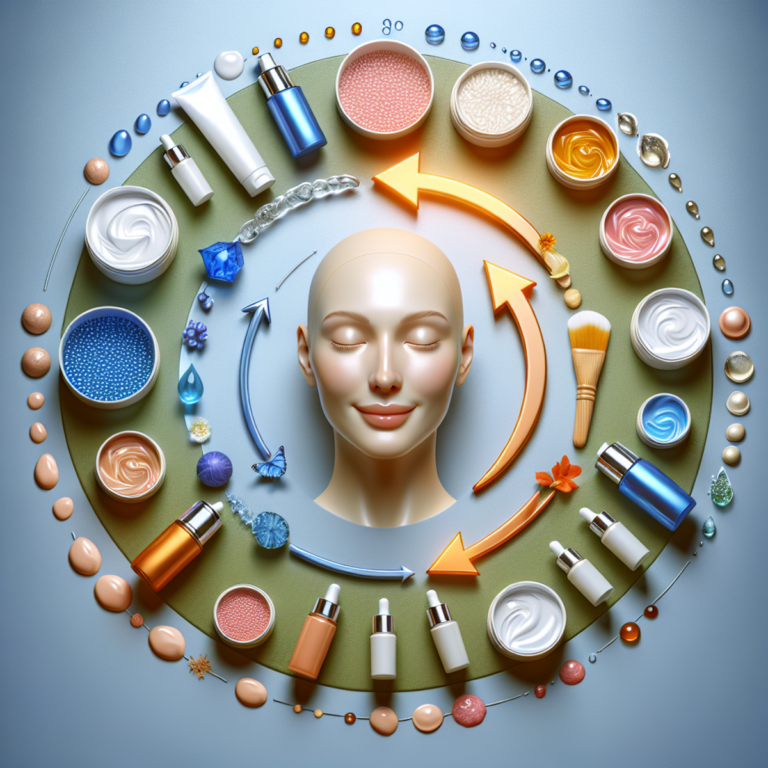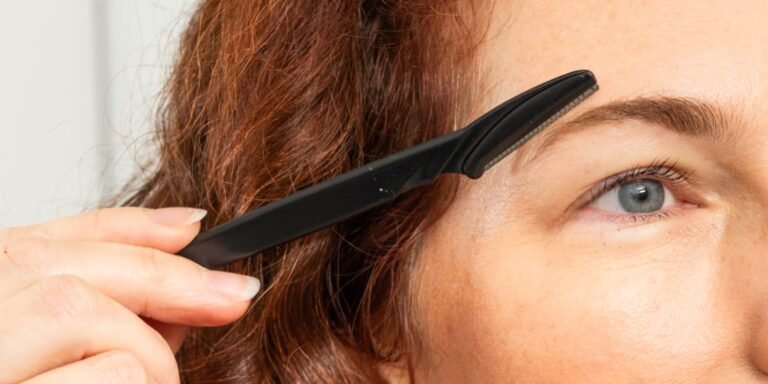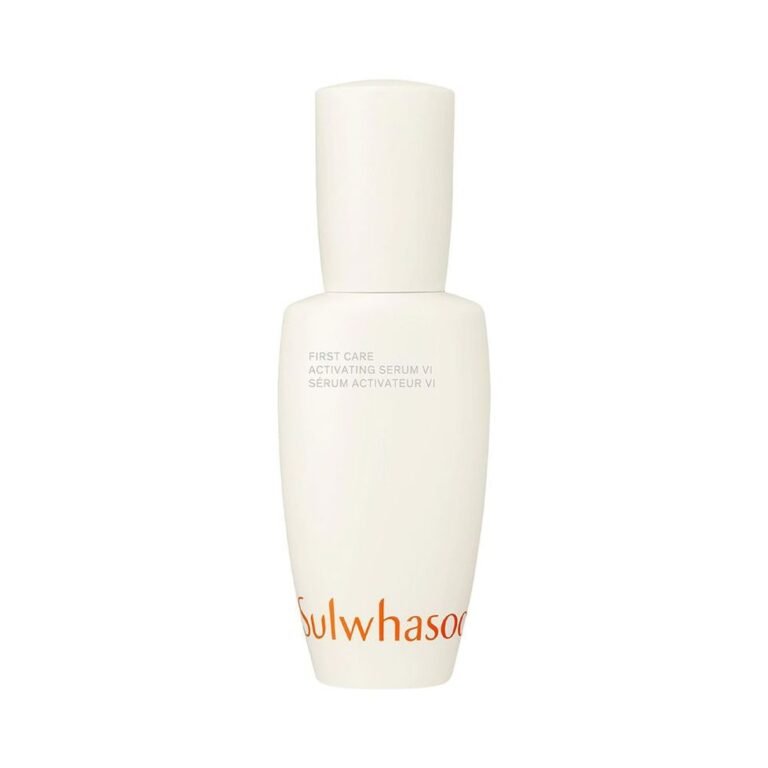How to Get Rid of Pimples

Introduction
Pimples are a common skin issue that affects people of all ages. These pesky blemishes can be caused by a variety of factors, including clogged pores, excess oil production, dead skin cells, and hormonal changes. Addressing pimples effectively is crucial not only for maintaining clear skin but also for boosting self-confidence.
This article will explore various methods to help you get rid of pimples:
- Topical Treatments: Over-the-counter solutions like benzoyl peroxide and salicylic acid.
- Natural Remedies: Options such as tea tree oil, aloe vera gel, and green tea.
- Quick Fixes: Immediate remedies like cortisone injections and ice application.
- Lifestyle Changes: Dietary considerations and avoiding common mistakes in pimple treatment.
By understanding these approaches, you can develop a personalized skincare routine that targets existing pimples while preventing future breakouts.
Understanding Pimples
What Are Pimples?
Pimples, also known as acne, are a common skin issue that many people face. They form when hair follicles under the skin become clogged with oil and dead skin cells. This can lead to inflammation and the development of pus-filled lesions on the skin’s surface.
Factors Contributing to Pimples
Several factors contribute to the development of pimples:
- Clogged Pores: Dead skin cells and sebum (oil) can accumulate and block pores, creating an environment where bacteria can thrive.
- Excess Oil Production: Sebaceous glands produce oil to keep your skin moisturized. However, excess production can lead to oily skin and clogged pores.
- Dead Skin Cells: When dead skin cells are not shed properly, they can mix with oil and clog pores.
- Hormonal Fluctuations: Hormones, particularly during adolescence, menstruation, pregnancy, or stress, can increase oil production and lead to breakouts.
Understanding these underlying causes is crucial for effectively addressing and preventing pimples. This knowledge helps in choosing appropriate treatments that target specific factors contributing to acne formation.
Topical Treatments for Pimples
Several over-the-counter treatments are effective in managing and reducing pimples. Two of the most commonly recommended ingredients are benzoyl peroxide and salicylic acid.
Benzoyl Peroxide
Benzoyl peroxide is a powerful agent known for its ability to combat acne-causing bacteria. It works by:
- Killing Bacteria: Benzoyl peroxide penetrates the skin and releases oxygen, which destroys the bacteria responsible for acne.
- Reducing Oil Production: By decreasing the oiliness of the skin, it helps prevent future breakouts.
- Exfoliating Dead Skin Cells: It encourages the shedding of dead skin cells, keeping pores clear.
The effectiveness of benzoyl peroxide is well-documented. Typically found in concentrations ranging from 2.5% to 10%, it is available in various forms such as gels, creams, and cleansers. Users often notice an improvement within a few weeks, although some may experience dryness or irritation initially.
Salicylic Acid
Salicylic acid is another key ingredient in many acne treatments, valued for its unique properties:
- Unclogging Pores: Salicylic acid exfoliates the skin by dissolving dead skin cells that can clog pores and lead to pimples.
- Anti-inflammatory Effects: It reduces inflammation and redness associated with pimples.
- Oil Regulation: Helps manage excess oil production, maintaining a clearer complexion.
Salicylic acid is particularly beneficial for those with blackheads and whiteheads. Available in concentrations between 0.5% and 2%, it comes in various formulations such as toners, serums, and spot treatments. Consistent use can result in smoother skin texture and fewer breakouts.
Combining Treatments
Combining benzoyl peroxide with salicylic acid can offer comprehensive care by targeting different aspects of acne formation. However, it’s essential to introduce these treatments gradually to avoid excessive dryness or irritation. Consulting with a dermatologist can help determine the best combination and usage frequency for individual skin types.
By incorporating these topical treatments into your skincare routine, you can effectively manage pimples and achieve clearer skin.
Natural Remedies for Pimples
Natural remedies offer alternative solutions for pimple treatment, often with fewer side effects compared to conventional methods. These remedies can be effective when integrated into your skincare routine.
Tea Tree Oil: Antibacterial Properties
Tea tree oil is known for its antibacterial properties. Studies have shown that it can be as effective as benzoyl peroxide in treating acne. The oil works by penetrating the skin and killing the bacteria that cause pimples.
How to Use
Dilute tea tree oil with a carrier oil (like coconut or jojoba oil) before applying it directly to the pimple. This prevents skin irritation.
Effectiveness
It helps reduce inflammation and redness, leading to quicker healing of the pimple.
Aloe Vera Gel: Soothing and Anti-inflammatory
Aloe vera gel is celebrated for its soothing and anti-inflammatory effects, making it ideal for irritated skin.
Benefits
- Reduces redness and swelling
- Promotes faster healing of pimples
- Hydrates the skin without clogging pores
How to Use
Apply pure aloe vera gel directly on the affected area. For best results, use it twice daily.
Green Tea: Antioxidant Benefits
Green tea isn’t just beneficial when consumed; it also offers significant benefits when applied topically.
Antioxidant Properties
- Rich in catechins, which can help reduce inflammation
- Helps fight free radicals that may damage skin cells
How to Use
- Brew green tea, allow it to cool, and apply it to your face using a cotton ball.
- Alternatively, you can create a face mask by mixing green tea leaves with honey.
Incorporating these natural remedies into your skincare routine provides an alternative approach to managing pimples. They offer unique benefits that complement conventional treatments.
Quick Fixes for Pimples
Immediate Remedies to Reduce Size and Inflammation
When you’re in need of a quick fix for an unexpected pimple, there are several methods that can provide temporary relief. These remedies are not long-term solutions but can help reduce the size and inflammation of pimples effectively.
1. Cortisone Injections
One of the fastest ways to diminish a particularly stubborn pimple is through cortisone injections. Administered by a dermatologist, this procedure involves injecting a small amount of corticosteroid directly into the pimple.
- How It Works: Corticosteroids reduce inflammation by suppressing the immune response in the treated area.
- Expected Results: Significant reduction in swelling and redness within 24 to 48 hours.
This treatment is especially useful for cystic acne or nodules that are painful and difficult to treat with over-the-counter products. However, due to its potency, it should only be done by professionals and not used frequently.
2. Ice Application
Applying ice to a pimple is another quick remedy that can help reduce inflammation temporarily.
- How to Use: Wrap an ice cube in a clean cloth and apply it to the affected area for about 10-15 minutes.
- Benefits: The cold constricts blood vessels, reducing swelling and redness.
While this method won’t eliminate the pimple entirely, it can make it less noticeable for a short period, making it ideal before events or important meetings.
Overnight Solutions
When searching for how to get rid of pimples overnight, several spot treatments and remedies might come up.
Popular Overnight Solutions:
- Benzoyl Peroxide Spot Treatments: Apply a small amount directly on the pimple before bed. This helps kill bacteria and dry out the pimple.
- Salicylic Acid Treatments: These work by unclogging pores and reducing inflammation.
- Hydrocolloid Patches: These patches absorb excess fluid from pimples and protect them from bacteria while you sleep.
Caution:
While these overnight solutions can be effective, it’s essential not to rely on them too heavily. Overuse can lead to skin irritation or dryness, exacerbating acne problems in the long run.
Incorporating these quick fixes into your skincare routine can offer temporary relief from pimples. However, combining them with longer-term treatments and lifestyle changes will yield more sustainable results.
Face Masks for Acne Treatment
Incorporating face masks into your acne skincare routine can provide targeted treatment that complements other methods. These masks offer deep cleansing, exfoliation, and anti-inflammatory benefits, making them a valuable addition to your regimen.
Types of Effective Face Masks
Salicylic Acid Masks
Salicylic acid is a beta hydroxy acid (BHA) known for its ability to penetrate deep into the pores. It helps in:
- Unclogging Pores: By exfoliating the skin surface and dissolving dead skin cells, salicylic acid prevents pore blockages.
- Reducing Inflammation: Its anti-inflammatory properties soothe irritated skin and reduce redness.
- Preventing Future Breakouts: Regular use of salicylic acid masks can keep pores clean, reducing the frequency of pimples.
A popular choice among those looking to manage persistent acne, salicylic acid masks can be applied once or twice a week.
Sulfur Masks
Sulfur is another potent ingredient in face masks known for its antibacterial and anti-inflammatory properties. Benefits include:
- Absorbing Excess Oil: Sulfur helps control sebum production, which reduces the likelihood of clogged pores.
- Exfoliating Dead Skin Cells: It promotes shedding of the outer layer of skin, preventing buildup that can lead to breakouts.
- Antimicrobial Action: Sulfur’s ability to kill bacteria aids in reducing existing pimples and preventing new ones.
Sulfur masks are especially beneficial for oily skin types prone to frequent breakouts.
How to Use Face Masks Effectively
To maximize the effectiveness of face masks in targeting pimples:
- Cleanse Your Skin Thoroughly: Before applying any mask, ensure your skin is clean to allow better penetration of active ingredients.
- Apply Evenly: Use a brush or your fingers to apply an even layer over your face or affected areas.
- Follow Instructions: Leave the mask on as recommended by the product instructions—typically 10-15 minutes.
- Rinse and Moisturize: After removing the mask, rinse with lukewarm water and follow up with a suitable moisturizer.
Integrating these face masks into your skincare routine can effectively address how to get rid of breakouts and maintain clearer skin. Whether you opt for salicylic acid-based masks or sulfur masks, consistent use aligned with your skin type will yield the best results.
In addition to face masks, dietary considerations play a crucial role in managing acne severity. This aspect is often overlooked when discussing acne treatment, but it can significantly influence the effectiveness of topical treatments like face masks. Furthermore, understanding the basics and beyond about acne can empower individuals in their journey towards clearer skin.
Dietary Considerations for Acne Management
The connection between diet and acne is a topic of growing interest in dermatology. While the exact mechanisms remain under investigation, certain dietary components have been linked to increased acne severity.
Dairy Products as Potential Triggers
Research suggests that dairy consumption effects on skin health may be significant. Dairy products, especially milk, contain hormones and bioactive molecules that can influence the body’s own hormone levels. This hormonal imbalance can lead to increased oil production and clogged pores, which are primary contributors to acne.
High dairy consumption has been associated with:
- Increased sebum (oil) production
- Elevated levels of insulin-like growth factor 1 (IGF-1)
- Promotion of inflammatory responses in the skin
These factors collectively create an environment conducive to pimple formation and exacerbate existing acne conditions.
Impact of Specific Dairy Products
Different types of dairy products may have varying impacts on skin health:
- Milk (both skimmed and whole): Often linked to higher acne severity due to its hormonal content.
- Cheese and yogurt: These fermented products may have different effects, with some studies suggesting a lesser impact compared to milk.
Reducing or eliminating dairy from your diet might help in managing acne better. Some individuals have reported clearer skin after adopting a dairy-free diet.
Practical Tips for Reducing Dairy Intake
If you’re considering dietary adjustments to manage acne, you might find these tips useful:
- Switch to plant-based alternatives: Almond milk, soy milk, and oat milk are popular substitutes.
- Monitor your skin’s response: Keep a diary noting any changes in your skin condition when you reduce or eliminate dairy.
- Consult with a dermatologist or nutritionist: Professional guidance can offer personalized advice tailored to your specific needs.
Understanding the diet and acne connection can empower you to make informed decisions about your dietary habits. While more research is needed, reducing high-dairy foods could be a beneficial step in your journey on how to get rid of pimples effectively.
Avoiding Common Mistakes in Pimple Treatment
Common Misconceptions About Treating Pimples
When it comes to treating pimples, several common misconceptions can lead to ineffective or even harmful practices:
- Using toothpaste as a spot treatment: While toothpaste contains ingredients that may dry out a pimple, it also includes substances that can irritate the skin, leading to redness and inflammation. This method is not recommended by dermatologists, as it can worsen the problem rather than solve it.
- Believing that popping pimples accelerates healing: In reality, squeezing or picking at pimples can push bacteria deeper into the skin, increasing the risk of infection and scarring. It’s essential to resist the urge to pop pimples and instead use appropriate treatments to manage them.
Why Harsh Astringents Should Be Avoided
Harsh astringents are often thought to cleanse the skin thoroughly and reduce oiliness, but they can have adverse effects on acne-prone skin:
- Products containing high levels of alcohol or other astringent ingredients can strip the skin of its natural oils, leading to excessive dryness.
- When the skin becomes too dry, it may produce more oil to compensate, which can worsen acne conditions.
Using harsh exfoliants is another mistake people make. While exfoliation is beneficial for removing dead skin cells and unclogging pores, over-exfoliating can irritate the skin barrier and cause more harm than good. It’s crucial to choose gentle exfoliants and limit their use to avoid aggravating pimples.
Skincare Tips To Avoid Aggravating Pimples
To effectively manage pimples without worsening them:
- Avoid using toothpaste: Instead, opt for proven spot treatments containing benzoyl peroxide or salicylic acid.
- Refrain from popping pimples: Use appropriate topical treatments and let the pimple heal naturally.
- Choose gentle cleansers: Use mild, non-comedogenic cleansers that do not strip your skin of its essential oils.
- Limit exfoliation: Stick to gentle exfoliating products and avoid overuse.
- Moisturize regularly: Even if you have oily skin, using a suitable moisturizer helps maintain a healthy skin barrier.
By steering clear of these common mistakes and adopting proper skincare practices, you can better manage your pimples without causing additional irritation or damage.
Professional Treatment Options for Persistent Acne
For severe cases of acne that don’t respond well to home remedies or over-the-counter products, professional treatments offer a viable solution. These methods are often administered by dermatologists and can provide significant improvements.
Dermatological Procedures
- Chemical Peels: These involve applying a chemical solution to the skin, which causes it to exfoliate and eventually peel off. The new skin is usually smoother and less prone to acne. Chemical peels can help reduce acne lesions, scars, and hyperpigmentation.
- Laser Therapy: This treatment uses focused light to target and destroy acne-causing bacteria while reducing oil production in the skin. Laser therapy also promotes collagen production, which can improve the appearance of acne scars.
- Microdermabrasion: A minimally invasive procedure that exfoliates the outer layer of skin using fine crystals or a diamond tip. It helps unclog pores, remove dead skin cells, and stimulate cell turnover.
- Light Therapy (Phototherapy): Utilizing blue or red light, this treatment targets specific wavelengths to reduce inflammation and kill bacteria in the skin.
- Corticosteroid Injections: For particularly inflamed or cystic pimples, corticosteroid injections can quickly reduce swelling and pain.
Prescription Medications
- Oral Antibiotics: When topical treatments aren’t enough, oral antibiotics like doxycycline or minocycline can be prescribed to reduce bacteria and inflammation.
- Hormonal Treatments: For women experiencing hormonal acne, birth control pills or anti-androgen medications like spironolactone can help regulate hormone levels.
- Isotretinoin (Accutane): A powerful oral medication reserved for severe cases of cystic acne that don’t respond to other treatments. Isotretinoin reduces oil production, shrinks sebaceous glands, and has long-lasting effects.
Benefits and Considerations
Professional treatments offer more targeted and potent solutions compared to over-the-counter products. They are tailored to individual needs based on a thorough examination by a dermatologist. However, it’s essential to consider potential side effects and costs associated with these treatments. Always consult with a qualified healthcare provider to determine the most suitable option for your specific condition.
These professional options provide an array of choices for individuals struggling with persistent acne, ensuring that there is a viable treatment path regardless of severity or skin type.
Creating a Personalized Skincare Routine
Tailoring your skincare routine to your specific needs is crucial for effectively managing and preventing pimples. Individual skin types react differently to various treatments, and what works for one person may not be effective for another. Here are some key considerations for creating a personalized routine:
1. Identify Your Skin Type
- Oily: Focus on products that control excess oil without stripping your skin.
- Dry: Opt for hydrating treatments that won’t exacerbate dryness.
- Combination: Balance products that address both oily and dry areas.
2. Preventive Measures
- Consistent cleansing to remove dirt and oil buildup.
- Use of non-comedogenic moisturizers to keep pores clear.
- Regular exfoliation to prevent dead skin cells from clogging pores.
3. Targeted Treatments
- Benzoyl Peroxide: Effective for killing acne-causing bacteria.
- Salicylic Acid: Helps unclog pores and reduce inflammation.
- Retinoids: Promote cell turnover and prevent new pimples from forming.
4. Incorporate Natural Remedies
- Tea Tree Oil: Offers antibacterial benefits with fewer side effects.
- Aloe Vera Gel: Soothes irritated skin and reduces inflammation.
- Green Tea Extracts: Provides antioxidant properties that can help manage acne.
5. Regular Monitoring
- Keep track of how your skin responds to different products.
- Adjust the routine based on seasonal changes or hormonal fluctuations.
Creating a skincare routine tailored to your individual needs is essential in the journey of how to get rid of pimples effectively. This approach not only targets existing breakouts but also helps in preventing future ones, ensuring healthier skin in the long run.
Conclusion
Achieving healthy, clear skin involves a combination of effective treatments and lifestyle changes. By understanding the root causes of pimples and exploring various treatment options, you can tailor a skincare routine that addresses your specific needs.
Key Points to Remember:
- Topical Treatments: Use products containing benzoyl peroxide or salicylic acid to target pimples directly.
- Natural Remedies: Consider alternatives like tea tree oil, aloe vera gel, and green tea for their soothing and antibacterial properties.
- Quick Fixes: Utilize cortisone injections and ice application for immediate relief from inflammation.
- Face Masks: Incorporate masks with salicylic acid or sulfur to treat acne effectively.
- Dietary Adjustments: Be aware of the potential impact of dairy on your skin and make necessary dietary changes.
- Avoiding Mistakes: Stay away from using toothpaste or harsh astringents on pimples.
For those dealing with persistent acne, professional treatments such as chemical peels and laser therapy may offer more significant results. Personalizing your skincare routine is crucial in preventing future breakouts while treating existing ones.
By integrating these strategies into your daily regimen, you can achieve effective long-term solutions for maintaining healthy skin free from blemishes.
FAQs (Frequently Asked Questions)
What are the common causes of pimples?
Pimples commonly form due to clogged pores, excess oil production, dead skin cells, and hormonal fluctuations. Understanding these factors can help in effectively addressing and treating acne.
What topical treatments are effective for treating pimples?
Effective topical treatments include benzoyl peroxide, which targets acne-causing bacteria, and salicylic acid, known for its ability to unclog pores and exfoliate the skin. These over-the-counter options can significantly reduce the severity of pimples.
Are there natural remedies for treating pimples?
Yes, natural remedies such as tea tree oil, aloe vera gel, and green tea can be effective alternatives for pimple treatment. Tea tree oil has antibacterial properties, aloe vera offers soothing effects, and green tea provides antioxidant benefits that may aid in acne management.
What quick fixes can I use to reduce pimples overnight?
Quick fixes include cortisone injections to reduce inflammation, applying ice to temporarily decrease swelling, and using overnight spot treatments. However, it’s important not to rely too heavily on these solutions as they are only temporary measures.
How does diet affect acne severity?
Diet can significantly impact acne severity; for instance, high dairy consumption has been associated with increased acne flare-ups. Exploring dietary adjustments may help in managing skin health and reducing breakouts.
What should I avoid when treating pimples?
Common mistakes include using harsh astringents or home remedies like toothpaste that can aggravate the skin. It’s essential to avoid these approaches as they may worsen acne conditions instead of improving them.










